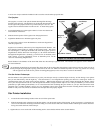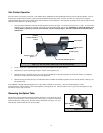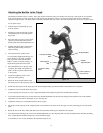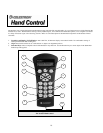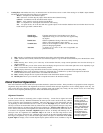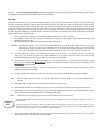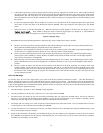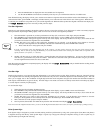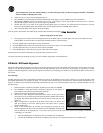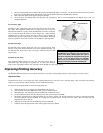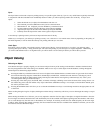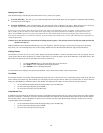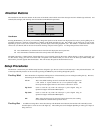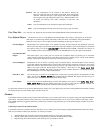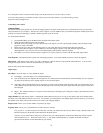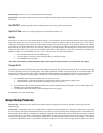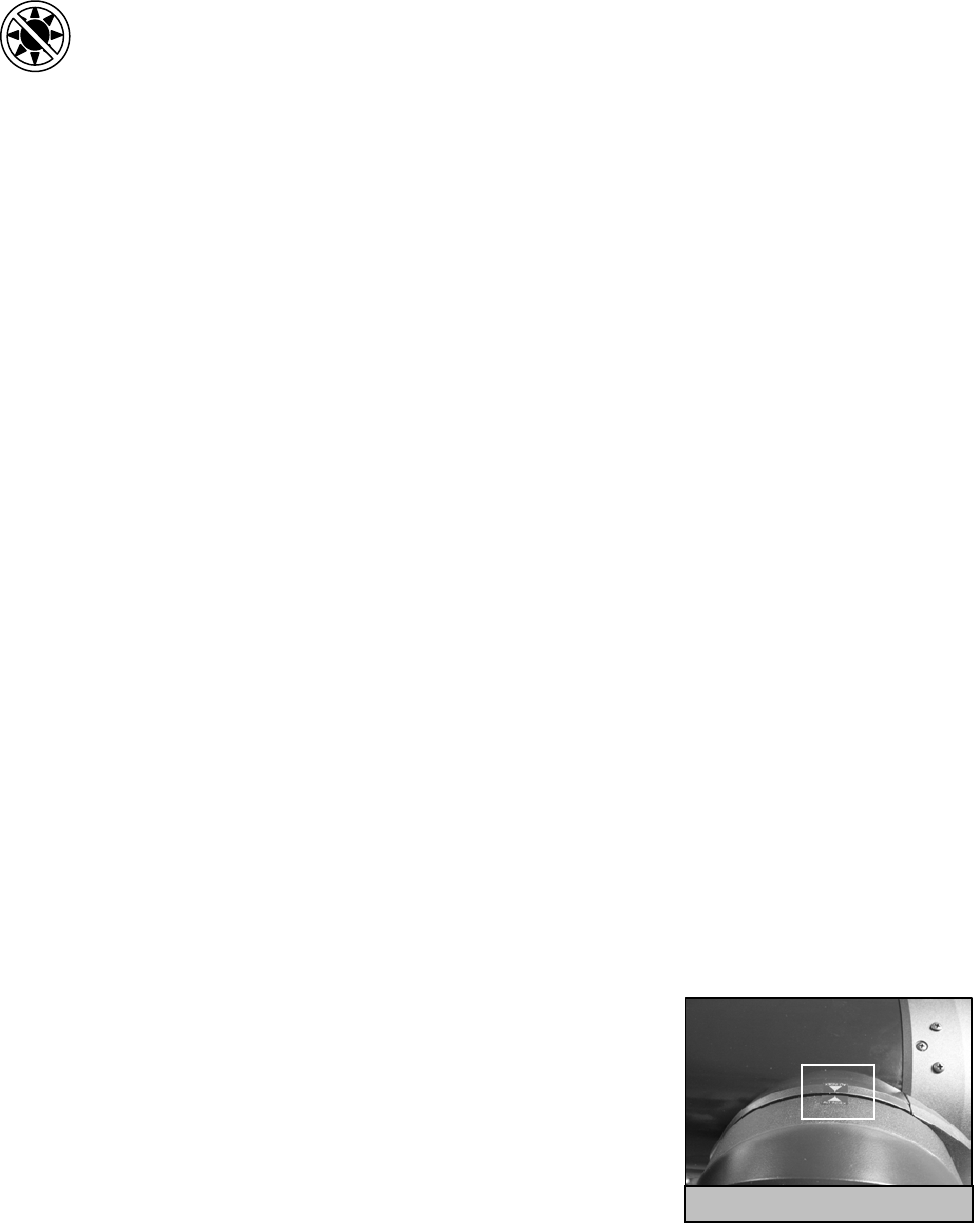
Never look directly at the sun with the naked eye or with a telescope (unless you have the proper solar filter). Permanent
and irreversible eye damage may result.
1. Select Solar System Align from the alignment options.
2. Press ENTER to accept the time/site information displayed on the display, or press UNDO to enter new information.
3. The SELECT OBJECT message will appear in the top row of the display. Use the Up and Down scroll keys (10) to select the
daytime object (planet, moon etc) you wish to align. Press ENTER.
4. NexStar then asks you to center in the eyepiece the alignment object you selected. Use the direction arrow buttons to slew the
telescope to the alignment object and carefully center it in the finderscope. Press ENTER when centered.
5. Then, center the object in the eyepiece and press ALIGN.
Once in position, the NexStar will model the sky based on this information and display Align Successful.
Tips for Using Solar System Align
• For safety purposes, the Sun will not be displayed in any of the hand control’s customer object lists unless it is enabled from the
Utilities Menu. To allow the Sun to be displayed on the hand control, do the following:
1. Press the UNDO button until the display reads “NexStar SE”
2. Press the MENU button and use the Up and Down keys to select the Utilities menu. Press ENTER.
3. Use the UP and Down keys to select Sun Menu and press ENTER.
4. Press ENTER again to allow the Sun to appear on the hand control display.
The Sun can be removed from the display by using the same procedure as above.
To improve the telescope pointing accuracy, you can use the Re-Align feature as described below.
E
E
Q
Q
N
N
o
o
r
r
t
t
h
h
/
/
E
E
Q
Q
S
S
o
o
u
u
t
t
h
h
A
A
l
l
i
i
g
g
n
n
m
m
e
e
n
n
t
t
EQ North and EQ South Alignments assist the user in aligning the telescope when polar aligned using the tripod’s built-in equatorial wedge.
Similar to the Altazimuth alignments described earlier, the EQ alignments gives you the choice of performing an AutoAlign, Two-Star
alignment, One-Star alignment or Solar System alignment. For help in polar aligning your NexStar, see the Astronomy Basics section later in
the manual.
EQ AutoAlign
The EQ AutoAlign uses all the same time/site information as the Alt-Az alignments, however it also requires you to position the tube so that
the altitude index markers are aligned (see figure 4-2), and then rotate the telescope base until the tube is pointed towards the Meridian (see
figure 4-3). Based on this information the NexStar will automatically slew to two selected alignment stars to be centered and aligned. To use
EQ Auto-Align:
1. Select EQ North or South Align from the alignment options and press ENTER
2. Press ENTER to accept the time/site information displayed on the display, or
press UNDO to enter the time/site information manually.
3. Select EQ AutoAlign method and press ENTER
4. With Set Alt to Index displayed on the hand control screen, use the up and down
arrow buttons to move the telescope tube upwards until the altitude index markers
are aligned. The altitude index markers are located at the top of the fork arm. See
figure 4-2.
5. When Find Meridian is displayed on the hand control screen, use the left and
right arrow buttons to move the telescope base until optical tube is pointing
towards the Meridian.
6. Based on this information, the NexStar will automatically display the most
suitable alignment stars that are above the horizon. Press ENTER to automatically
slew the telescope to the displayed star. If for some reason you do not wish to select one of these stars (perhaps it is behind a tree
or building), you can either:
Figure 4-2 - Altitude Index Markers
• Press the UNDO button to display the next most suitable star for alignment.
• Use the UP and DOWN scroll buttons to manually select any star you wish from the entire list of available stars.
15



